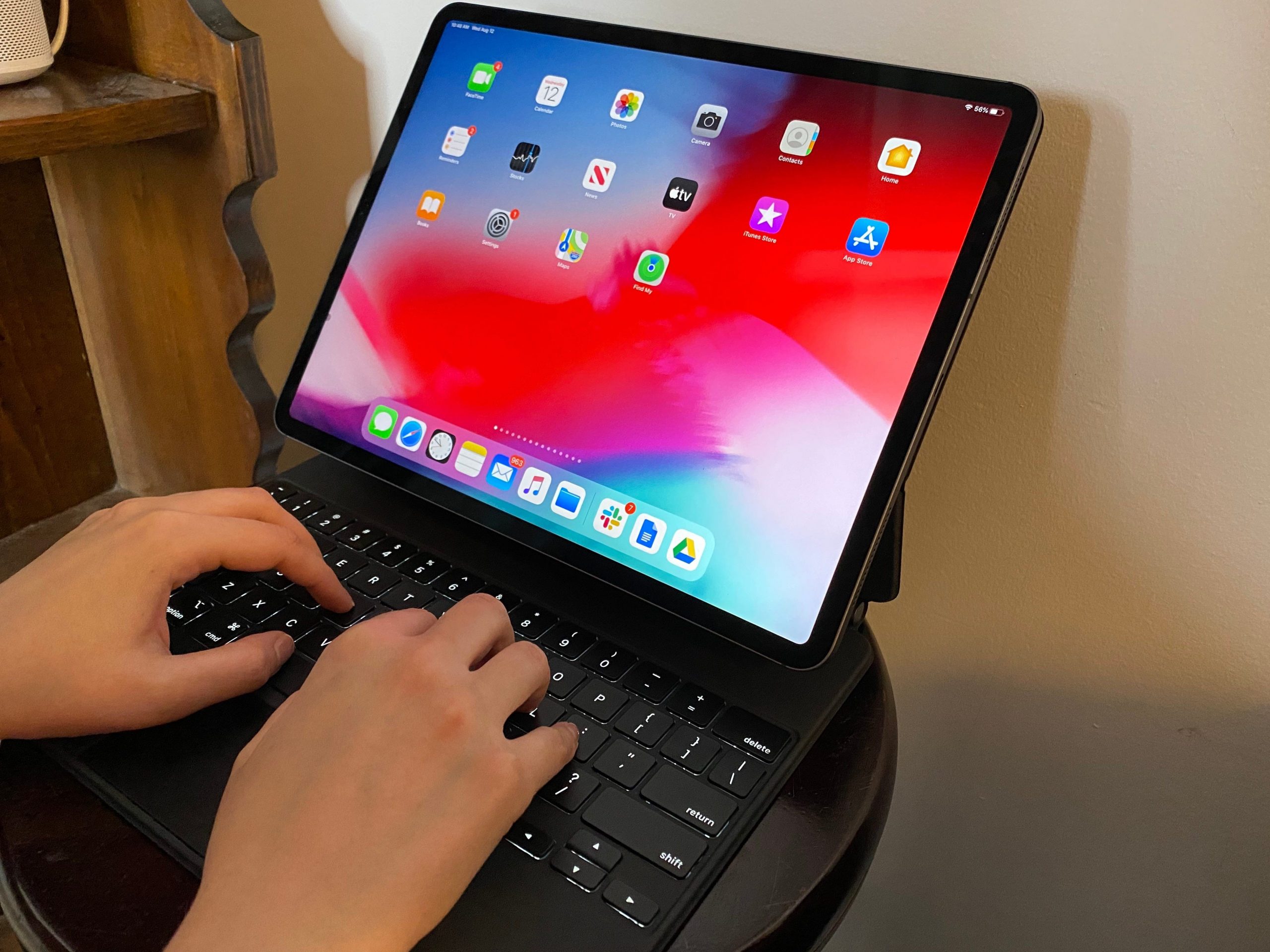- Apple’s Magic Keyboard for the iPad Pro, starting at $299.00, makes the iPad Pro feel much more like a laptop – albeit for a high price.
- The Magic Keyboard’s deep key travel, integrated touchpad, and lap-friendly design represent a major improvement over Apple’s previous iPad keyboard.
- But, there are other options out there that appear to offer a comparable experience for significantly less.
- If you’re planning to invest in an iPad Pro and a pricey accessory like the Magic Keyboard, it’s also probably worth examining whether a laptop may be a better choice for your work-related needs.
Table of Contents: Masthead Sticky
The iPad Pro's debut in 2015 marked a turning point for the iPad. No longer was it just a device just for playing games, watching Netflix, or browsing the web on a much larger screen than your iPhone provided.
Apple was laying the foundation for turning the iPad into a viable work device, a decision that came years after touch-friendly Windows tablets attempted to accomplish a similar goal.
That process has been years in the making, but in 2020, the iPad Pro is starting to feel more like a laptop replacement than ever before. Software improvements such as support for mouse and trackpad cursors, a new home screen that distinguishes the iPad from the iPhone, better multitasking features, and new accessories like Apple's Magic Keyboard case have contributed to this shift.
The new keyboard, which Apple launched back in May, marks a major improvement over Apple's previous offerings. The Magic Keyboard offers sturdier keys with much deeper travel compared to Apple's Smart Folio Keyboards, a base that feels much more durable, and adjustable viewing angles - all updates that were much-needed to make the iPad Pro an appealing laptop alternative.
But, those upgrades come at a steep price. The version designed for the 11-inch iPad Pro costs $299.00, while the keyboard for the larger-sized 12.9-inch iPad Pro will set you back $249.00. That means if you plan on purchasing a brand-new 11-inch iPad Pro with the keyboard, you'll be paying at least $1,100, which is $100 more expensive than the entry-level MacBook Air.
That should make you question whether an iPad Pro with the Magic Keyboard is the right computer for you, and the answer will ultimately come down to the iPadOS software.
Here's a closer look at what it's like to use the Magic Keyboard, which is compatible with Apple's third or fourth generation 12.9-inch iPad Pro or the first or second-generation 11-inch iPad Pro.
Typing experience and design
For a keyboard as expensive as the iPad Pro's Magic Keyboard, the typing experience better be superb. Thankfully, the Magic Keyboard delivers on that front. The keys themselves offer a good amount of depth and feedback, especially for a case, and the layout is spacious enough to avoid feeling cramped.
The setup experience is also a breeze; simply press the iPad Pro against the top half of the case above the keyboard, and it automatically attaches and pairs via Apple's smart connector.
Most importantly, however, the adjustable viewing angles that the case allows for make using the iPad Pro much more lap-friendly. Being able to tilt the iPad Pro prevents it from becoming too top-heavy, a complaint I've had with other keyboard cases in the past.
It's not just the weight distribution; the overall design makes the iPad Pro more conducive to use in the lap. Since the iPad Pro attaches to the top portion of the case, creating the illusion that it's floating above the keyboard, the flat base rests on your lap. This feels much more comfortable and easier to balance compared to tablets with kickstands, like Microsoft's Surface, or keyboard cases with a tent-shaped back that resembles a kickstand, like Apple's cheaper Smart Folio Keyboard cases.
The trackpad
The iPad Pro's Magic Keyboard also comes with another important update: the addition of a trackpad. Apple added trackpad and mouse support to the iPad in its iOS 13.4 update, an addition that's critical for owners using their iPad for productivity. But, don't expect the iPad's cursor to work exactly like that of a typical computer mouse.
Rather than taking the form of a floating arrow, the iPad has a small, round cursor that conforms to various buttons and interface elements throughout the operating system. That makes it a bit easier to be more precise in an operating system that's quite different from macOS or Windows 10. Plus, the trackpad supports the same touch-based gestures for switching between apps as the iPad's touch screen.
Overall, it's a welcome addition that will save you the hassle of having to reach up and touch the display to navigate the iPad's software, making it feel more laptop-like. But, there's still a little bit of a learning curve. I couldn't highlight and move text as easily when writing this review in Google Docs compared to a traditional mouse, for example.
The bottom line
Apple's Magic Keyboard offers one of the most laptop-like experiences available for the iPad. But, its high price should push you to consider whether an iPad or a laptop is best-suited for your work needs. A great keyboard and better multitasking features alone aren't enough to fully replace your laptop. It's still an adjustment and one that you need to be certain fits your workflow before investing in a pricey keyboard like the Magic Keyboard.
What are your alternatives?
If you are looking for a keyboard that will make it easier to get serious work done on your iPad Pro, the Magic Keyboard certainly won't disappoint. But, it's worth considering there are also cheaper options out there, like Logitech's Combo Touch, which also includes a touch pad and costs just $150.
The Brydge Pro+ also simulates a MacBook-like experience with a design that even resembles Apple's laptops, offering a full keyboard and trackpad. Both Logitech's and Brydge's keyboards also include a function key row, which Apple's Magic Keyboard lacks.
Apple has always maintained that iPad Pro isn't meant to be a laptop replacement. That may be true, but an accessory like the Magic Keyboard makes it clearer than ever that Apple is at least hoping the iPad Pro will take over some, if not all, of the functionality of your laptop.
Pros: Comfortable typing experience; Adjustable viewing angles; Easy setup Cons: Very expensive compared to other iPad keyboards




